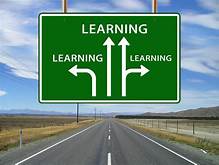 Learning is a characteristic of being human.
Learning is a characteristic of being human.
Even when we seem to not invest in learning, it just happens. Our experiences cause us to learn; the richer, the better.
And we are not alone. Mammals and reptiles alike teach one another; how find food, shelter, protect themselves, etc.
Learning is continuous, like breathing.
Say I simply walk to my car. I’m checking for rain (assessing weather patterns), navigating traffic, avoiding impediments that might trip me, ducking under overhangs and more.
We constantly learn from our experiences, watch for patterns and register things to remember; continuously building and refining our reservoir of information and knowledge.
Learning is systemic within the fabric of our existence.
We learn for several reasons. Consider here…
- Necessity
Required exposures from teachers, parents and leaders; establishing basic awareness and developing relevant skills culturally accepted as essential.
- Desire
Learning and knowledge we search out; creating deeper awareness, extra skills and more advanced specialization.
- Happenstance
That learning resulting from our experiences and exposure.
There is little universally held theory of HOW we learn and WHEN we do so most effectively. Although it is commonly accepted, we accomplish more readily when younger (< 10 years of age) and make inroads less quickly as we age.
And at some stage in our lives most of us need to assist others with their learning.
So eventually we all care about what motivates others to be receptive to our teachings.
It doesn’t matter if we are parents, teachers, managers, supervisors, executives, officers, colleagues, writers, friends, acquaintances or significant others. At some point we desire to pass on specific information or knowledge to others. And we WANT and/or NEED them to learn; the message must stick.
People like to hear great stories. That’s often a useful conduit to parse knowledge. But there is no set recipe or guaranteed approach.
My own experiences suggest people are far less motivated than I’d imagined in initiating and undertaking formal or self-planned learning.
For many individuals to be moved to action there must be Compulsion. SomeTHING or SomeONE is typically required to stimulate and/or compel activity.
It appears people learn more successfully when motivated by involvements that are….
- Physical
Causing them to directly experience and practice what they are to learn.
- Mental
Requiring them to think, consider and evaluate the relevant materials.
- Communal
Exposing them to groups immersed in the material and subject to the learning.
So, when we are trying to TEACH something, we have many avenues and approaches available. The same is true when we are trying to LEARN.
And the vehicle for best results can vary based on the recipient, resources, circumstances, subject, time and much more.
Although the breadth of variables can appear disconcerting, usually ANY reasonable attempt is better than none.
It is likely you currently need to teach somebody about something. This may be at work, socially or in your home.
If you really must get your message across and need the information to be embraced you should consider the factors, above. Stickiness matters.
Similarly, if you need training yourself, contemplate what would provide the best exposure and ensure an optimum learning experience.
We all have an on-going need to learn and we often need to teach.
When it matters, make sure you identify ALL the critical issues and opportunities involved and follow-up with practical, winning approaches to both your own Learning and Teaching.
Ian R. Mackintosh is the author of Empower Your Inner Manager Twitter@ianrmackintosh.


